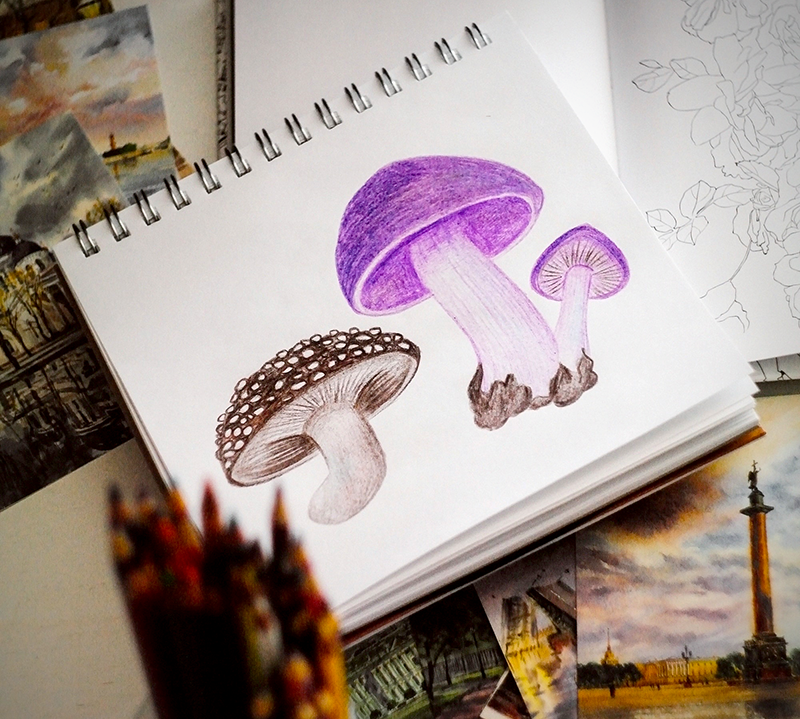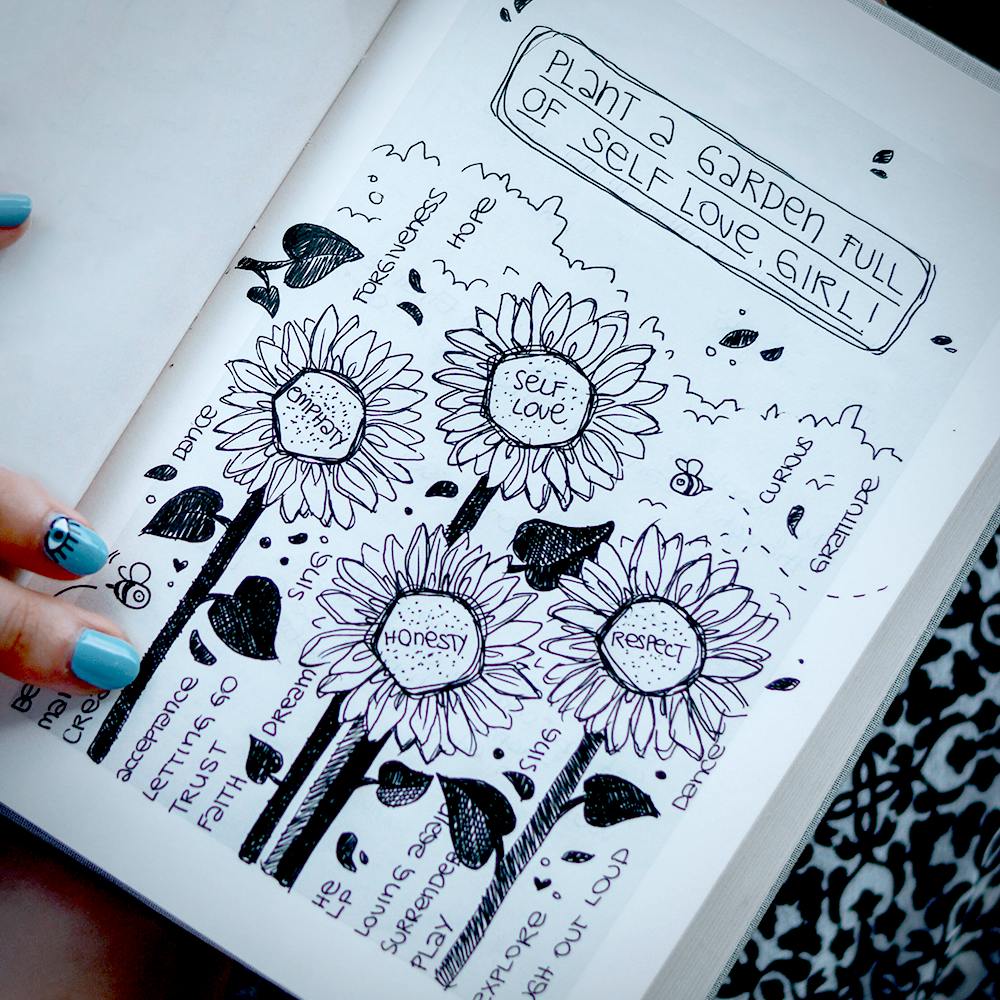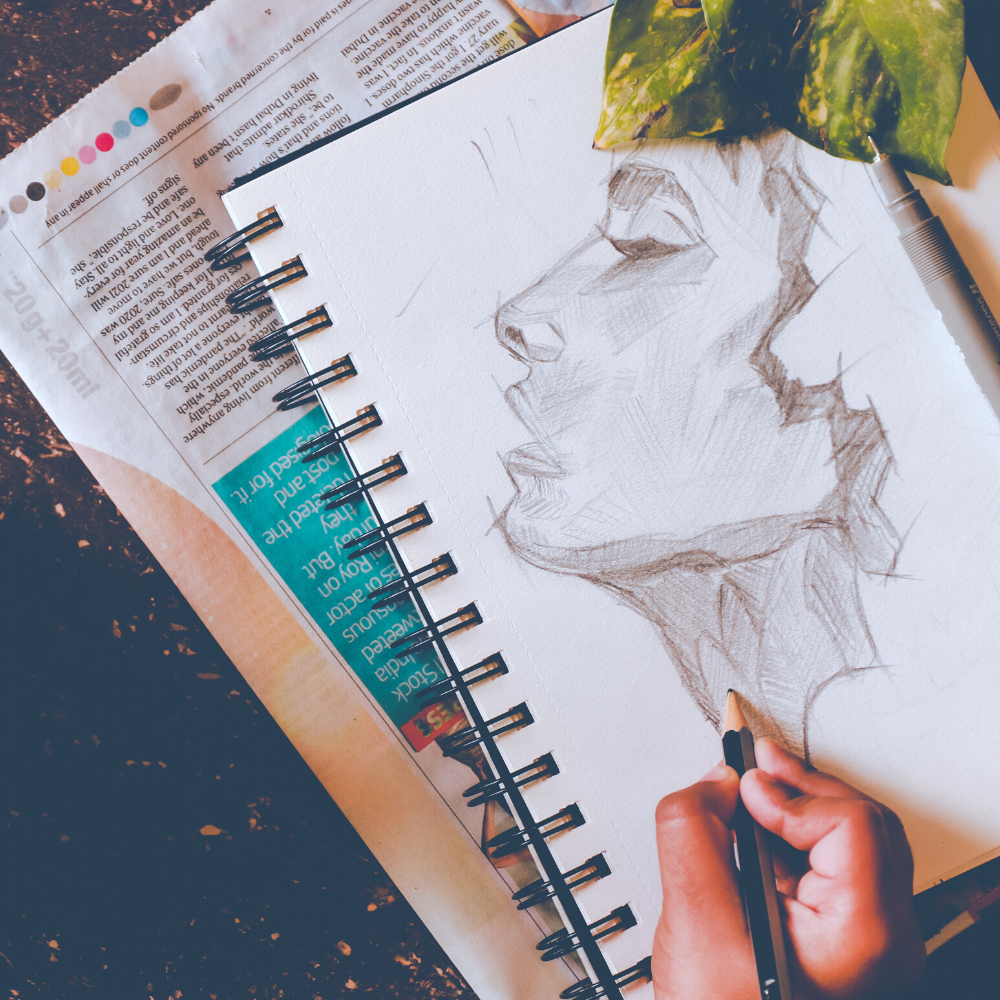Looking for a unique way to express your creativity?
Do you have a passion for visual art but struggle to find the perfect outlet for your thoughts and ideas?
Look no further, because we have found the ultimate solution – visual art journals.
Visual art journals have taken the creative world by storm, offering a unique outlet for self-expression and exploration.
These one-of-a-kind journals combine the best of both worlds by providing a canvas for self-expression while also serving as a personal diary or scrapbook.
Whether you're a seasoned artist looking to add more depth to your work or someone who simply loves creating, these versatile journals offer endless possibilities.
These pages filled with sketches, paintings, collages, and more have been gaining popularity among creators of all varieties.
From beginners to professionals, visual art journals offer the ultimate outlet for creative expression.
With endless possibilities and no rules to follow, they can be both therapeutic and inspiring.
In this post, we will dive into everything you need to know about visual art journals and how they can benefit artists of all levels.
By the end of this blog, you’ll be itching to start your own visual art journal.
So, grab your favorite art supplies and get ready to dive into this exciting world of self-expression through visual art journals!
Key Takeaways:
- Visual art journals are a blend of art and writing, serving as a platform for personal expression and creative exploration.
- They can be used with a variety of art supplies and techniques, accommodating all art styles and skill levels.
- Art journaling is not only a form of self-care but also a tool for developing artistic skills and documenting life experiences.


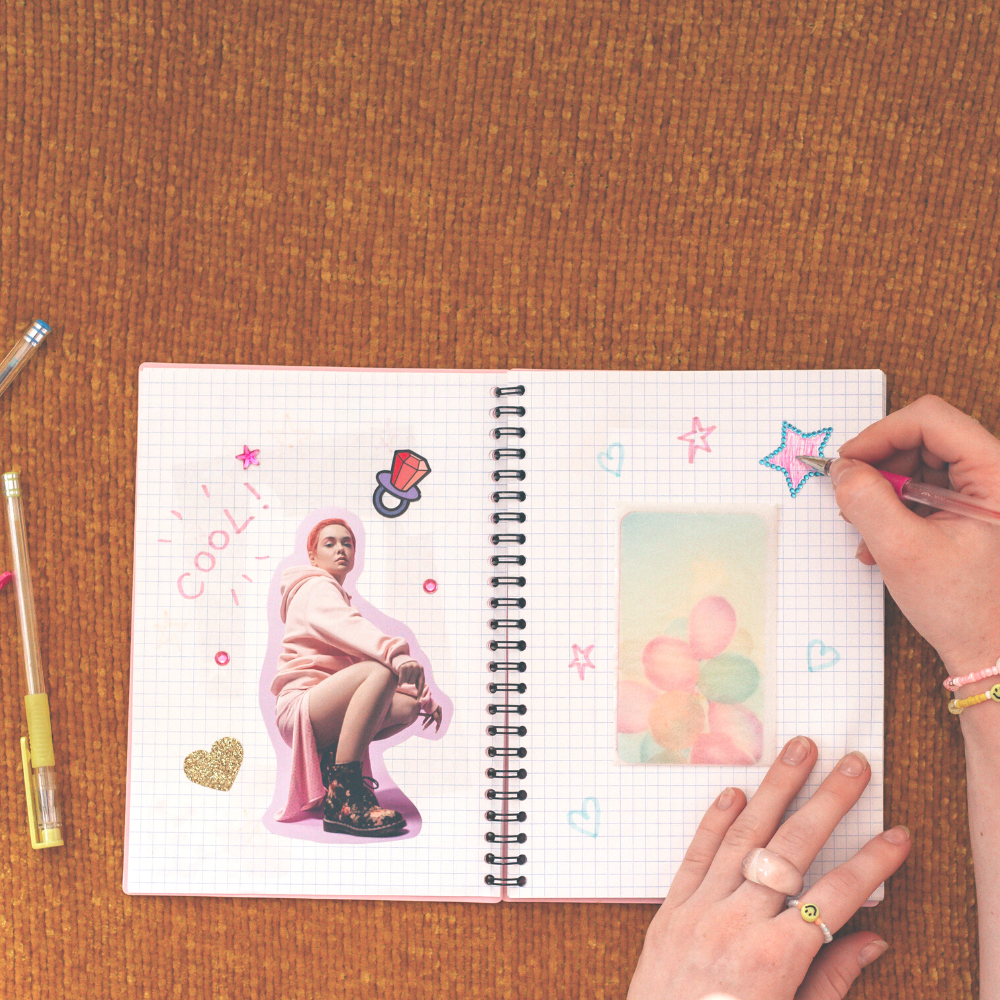
The Essence of Visual Art Journals
What are visual art journals, if not a testament to the boundless nature of human creativity?
Visual art journals, often known as art journals or visual diaries, are personalized spaces where the worlds of art and journaling collide.
They offer a canvas for individuals to express their thoughts, emotions, and creative ideas through a combination of visual elements and written notes.
Art journals are books, often with thicker paper to handle wet mediums, where one can create, draw, paint, collage, and write.
Unlike traditional journals, visual art journals focus on the incorporation of images and artwork alongside words, providing a more holistic record of one's life and inner workings.
They are a safe space to experiment, play, and freely express oneself without fear of judgment or perfection.
Art journals offer the ultimate playground for creativity.
There are no rules or guidelines to follow – you have complete freedom to create whatever your heart desires.
Whether it's through painting, sketching, collage-making, or mixed media, you can let your imagination run wild.
Furthermore, the use of various art supplies and techniques adds to the excitement and endless possibilities of visual art journals.
The Role of Art Journaling in Self-Expression
Art journaling is a powerful form of self-expression.
It allows individuals to explore their feelings and thoughts in a tangible form.
Whether it's a brain dump of ideas, an inspiration board for future projects, or a space to practice drawing skills, visual art journals offer a private, non-judgmental space for self-care and personal growth.
Writing as a Complementary Practice
Writing in an art journal is just as important as the visual elements.
It provides context to the images and helps to solidify thoughts and concepts.
Whether it's a few words or detailed paragraphs, writing adds depth to the visual narrative and aids in the process of reflection and analysis.
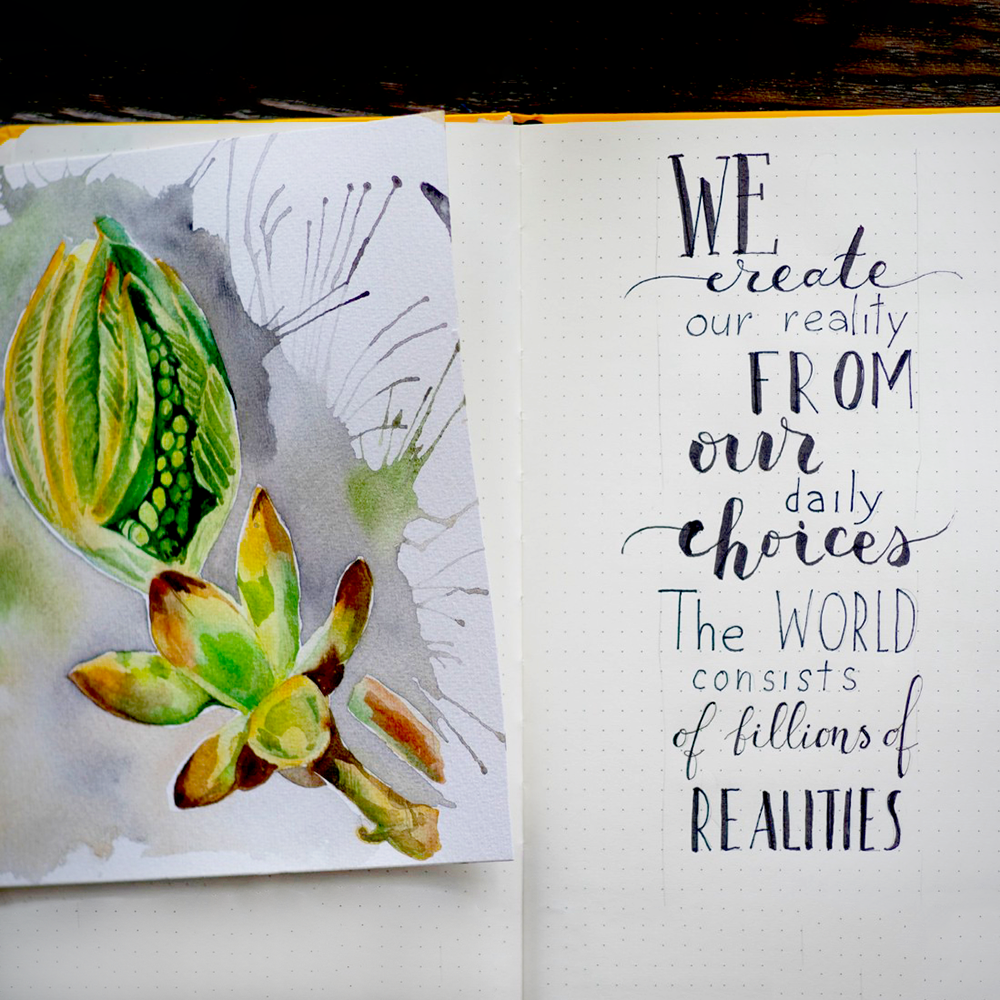


The Significance of Art Journaling in Daily Life
Art journaling can be seamlessly integrated into daily life as a practice of mindfulness and self-care.
It's a space to unwind, process the day's events, and channel emotions into something beautiful and meaningful.
It encourages a habit of creative thinking and offers a respite from the hustle and bustle of everyday life.
Exploring Themes and Concepts
Visual art journals are an excellent medium for exploring themes and concepts that resonate with the creator.
Whether it's delving into personal identity, societal issues, or natural beauty, these journals provide a space to deeply explore and express complex ideas through a combination of visuals and text.
The Importance of Regular Practice
Consistency is key in creative journaling.
Regular practice not only hones artistic skills but also fosters a habit of creative expression.
By dedicating time to work in their visual journals, individuals can ensure continuous growth and a sustained connection to their creative selves.
Art Journaling as a Record of Personal History
Visual art journals act as a personal archive, recording life's moments and the evolution of one's artistic journey.
They become a visual timeline, capturing the essence of experiences, emotions, and artistic endeavors over time.
As such, art journaling serves as a valuable tool for reflection and self-discovery.
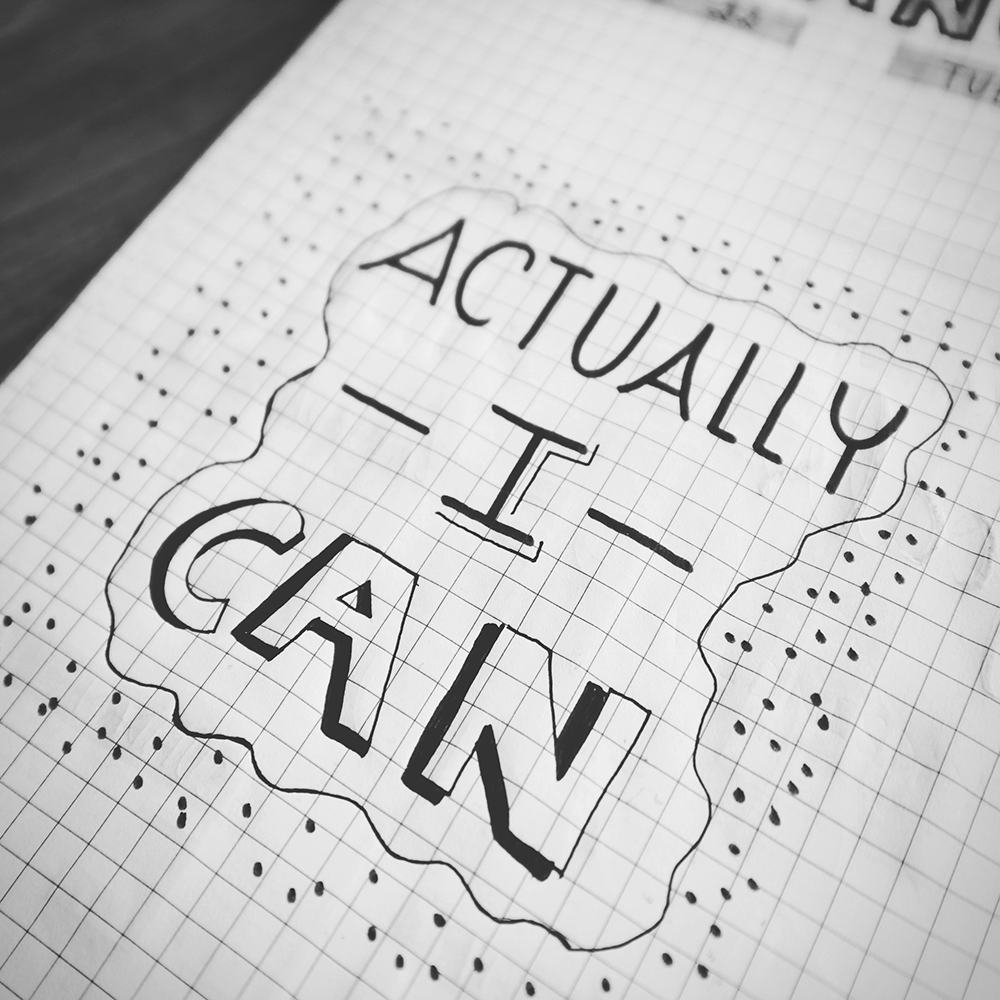


Choosing the Right Art Supplies
Selecting the appropriate art supplies is crucial for art journaling.
From dry media like pencils and pastels to wet media such as watercolors and acrylics, the choice of materials can greatly influence the creative process.
Thick paper or thicker paper journals are preferred to ensure that the pages can withstand various mediums without warping or bleeding through.
Experimentation and trying new supplies is encouraged in visual art journaling, so don't hesitate to mix and match to create unique effects.
The goal is to find your personal style and preferred mediums through trial and error.
Incorporating Different Art Styles
Visual art journals are versatile, accommodating a wide range of art styles.
Whether you're a fan of abstract, realism, or mixed media, all the pages of your journal are a blank slate for your artistic exploration.
This freedom allows artists to experiment with new techniques and develop their unique art style.
The beauty of art journaling lies in the fact that there are no boundaries or limitations – only endless possibilities.



The Creative Process and Art Practice
Art journaling is an excellent way to refine one's creative process and art practice.
By regularly creating in a journal, artists can track their progress, explore different types of art, and push the boundaries of their creativity.
It's a great book of reference for personal development and a repository of creative ideas.
Furthermore, the act of creating in itself is therapeutic and can alleviate stress and anxiety.
Visual art journals offer a safe space for self-discovery and growth through creative expression.
Visual Journals as a Learning Tool
Visual journals serve as a great example for those looking to enhance their artistic knowledge.
They can be used as a course of self-study, where artists document their learning journey, explore various art forms, and reflect on their experiences.
It's a space where mistakes are part of the learning curve, and every page is an opportunity for growth.
Art Journals Promoting Creative Growth
Visual art journals serve as a fertile ground for creative growth, offering a non-judgmental space where every idea can be explored and every impulse drawn out.
They are the sketchbook of the soul, where the seeds of creativity are sown and nurtured.
Artists of all levels find that their journals are a place to experiment with new techniques, mediums, and styles without the pressure of a final piece.
This freedom encourages a playful approach to art exploration, fostering development and innovation.
The pages of an art journal are often filled with examples of personal evolution, showcasing the journey from rough sketches to refined paintings.
Each entry is a testament to the power of regular practice and the importance of preserving even the most fleeting of ideas.
As artists revisit their past entries, they can witness their own progression, drawing inspiration from their earlier works and using them as a springboard for future creations.
In this way, visual art journals are not just repositories of past works but are active participants in the shaping of an artist's ongoing narrative.
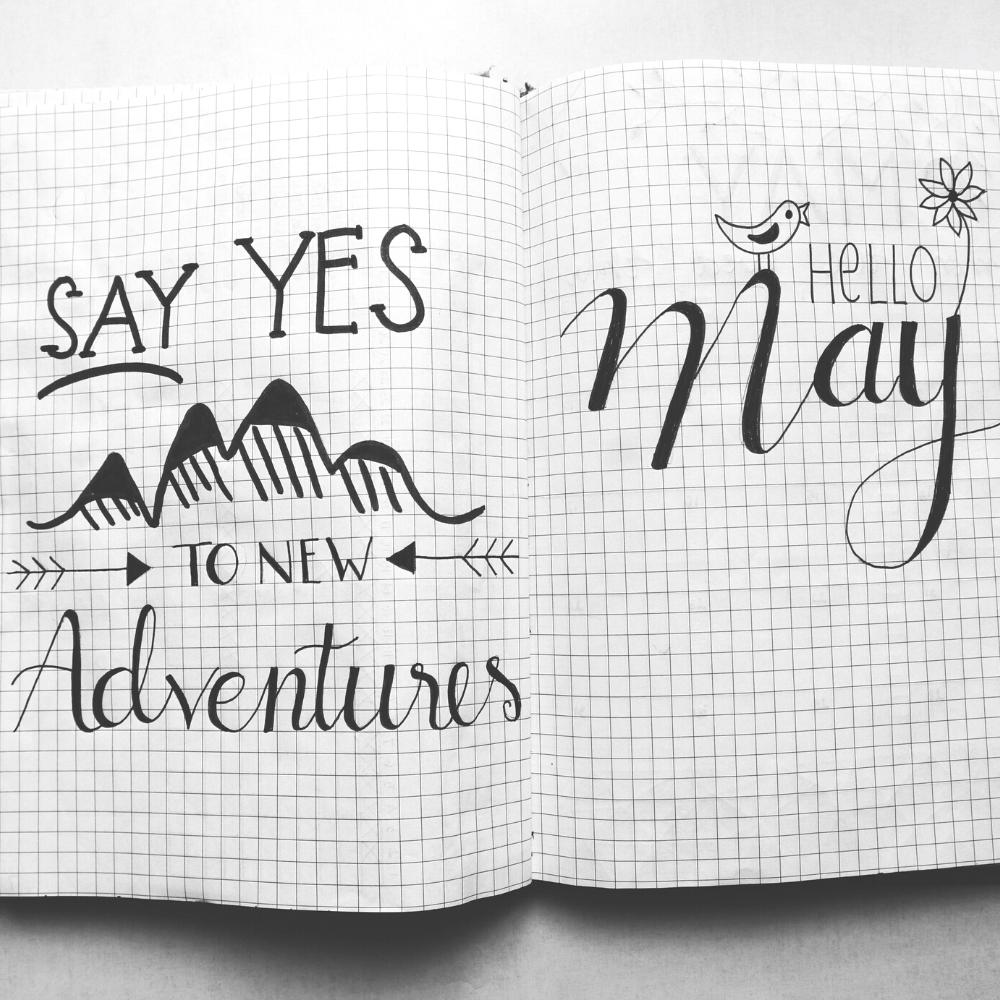


Sketching: The Foundation of Art Journaling
Sketching is often the starting point for many art journal entries, serving as the skeletal framework upon which other mediums can be layered.
It is a fundamental skill that allows artists to quickly capture ideas, moods, and details that can later be developed into more complex pieces.
Pencil sketches offer a simplicity that can be both challenging and rewarding, pushing the artist to focus on the essence of the subject.
The immediacy of sketching also makes it an ideal technique for art journaling on the go, enabling artists to document their surroundings or fleeting thoughts at a moment's notice.
The versatility of sketching is further highlighted when it is combined with other elements in an art journal.
Artists can overlay sketches with washes of paint, collage materials, or even digital media, creating a rich tapestry of mixed media art.
This layering can add depth and narrative to the sketches, transforming them from mere outlines to dynamic components of a visual story.
Sketching not only hones an artist's observational skills but also serves as a springboard for endless creative possibilities within the pages of their art journal.
The Intersection of Painting and Art Journaling
Painting is not just confined to canvases and murals; it finds a unique and intimate home within the pages of a visual art journal.
By incorporating painting techniques into their journals, artists can experiment with color, texture, and form in a more personal and exploratory way.
The fluidity of watercolors, the opacity of acrylics, or the richness of oils can all be used to convey emotions and narratives that words alone cannot.
This tactile experience allows for a deeper connection with the artwork, as each brushstroke contributes to the unfolding story on the page.
Moreover, painting within an art journal serves as a liberating practice, freeing artists from the constraints of perfection and allowing for the embrace of imperfections.
As layers of paint build up, they create a history within the journal, each layer representing a different moment in time.
This process can be particularly therapeutic, as it encourages mindfulness and present-moment awareness.
The act of painting in an art journal becomes a journey of self-discovery, with each page reflecting a piece of the artist's evolving identity.
The Power of Paper Ephemera and Collage
Incorporating paper ephemera, such as old book pages, tickets, and postcards, into a visual journal adds layers of texture and interest.
Collage techniques allow for the combination of different materials, creating a rich tapestry of visuals that can enhance the storytelling aspect of the journal.
These elements serve as a connection to the outside world, bringing in memories and experiences that add depth and personal meaning to the entries.
Collage is also an excellent tool for artists looking to break away from traditional drawing or painting techniques.
It allows for playfulness, spontaneity, and experimentation while adding a unique touch to each page.


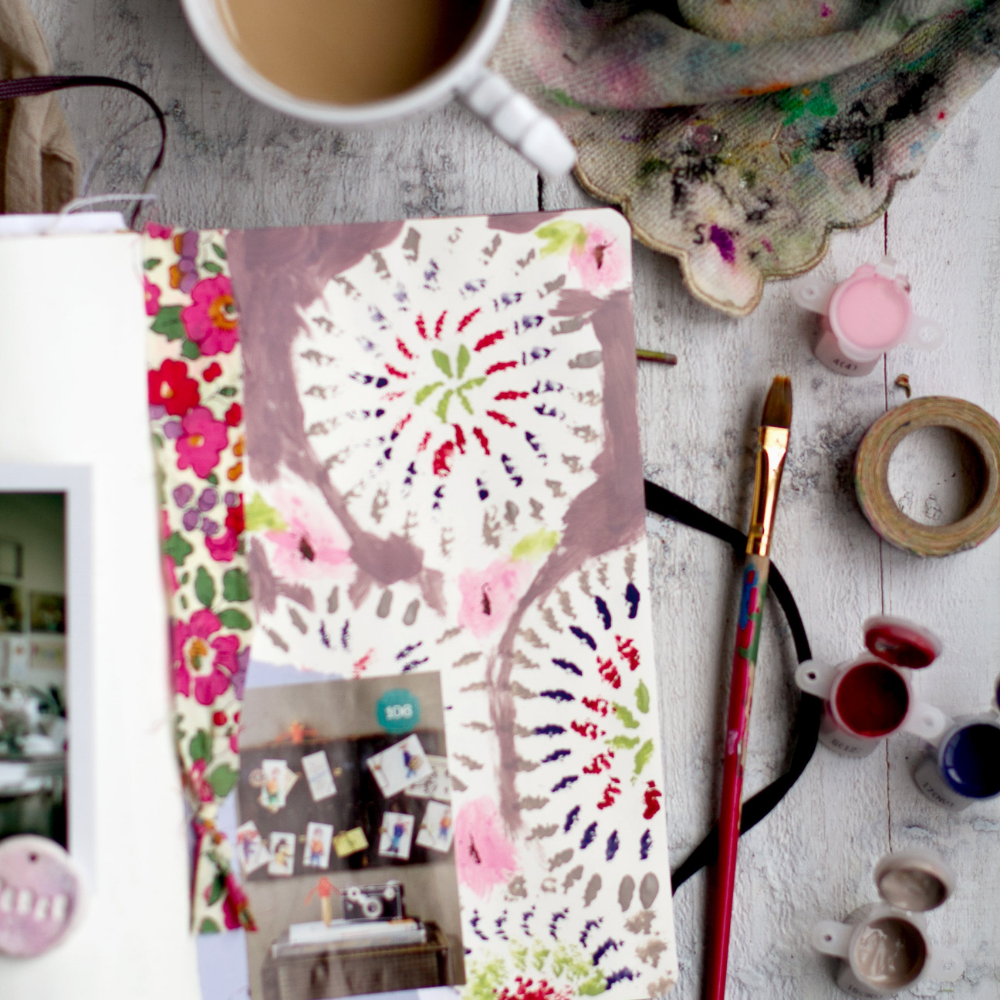
Visual Art Journals as a Catalyst
Visual art journals serve as a fertile ground for artistic growth, offering a non-judgmental space where every idea can be explored and every impulse drawn out.
They are the sketchbook of the soul, where the seeds of creativity are sown and nurtured.
Artists of all levels find that their journals are a place to experiment with new techniques, mediums, and styles without the pressure of a final piece.
This freedom encourages a playful approach to art exploration, fostering development and innovation.
The pages of an art journal are often filled with examples of personal evolution, showcasing the journey from rough sketches to refined paintings.
Each entry is a testament to the power of regular practice and the importance of preserving even the most fleeting of ideas.
As artists revisit their past entries, they can witness their own progression, drawing inspiration from their earlier works and using them as a springboard for future creations.
In this way, visual art journals are not just repositories of past works but are active participants in the shaping of an artist's ongoing narrative.
The Many Benefits of Visual Art Journals
Aside from being a fun and therapeutic activity, visual art journals offer numerous benefits for artists of all levels.
Here are some of the top advantages:
- Enhances self-awareness and mental well-being through creative expression.
- Provides a platform to practice artistic skills and experiment with different techniques.
- Helps in developing a personal style and building confidence as an artist.
- Serves as a record of personal experiences, thoughts, and growth.
- Encourages mindfulness and present-moment awareness while creating.
- Acts as a reference for future projects and artistic development.
- Promotes self-reflection and introspection through the combination of visual elements and written notes.
The Intersection of Visual Diary and Mental Wellness
The concept of a visual diary transcends mere art creation; it becomes a sanctuary for mental wellness and self care.
By transforming thoughts and emotions into visual representations, individuals engage in a therapeutic dialogue with themselves.
This form of self expression is not only cathartic but also serves as a reflective practice, allowing one to track personal growth and emotional shifts over time.
The act of transferring internal stuff onto a tangible medium can be a powerful tool in managing stress and enhancing mindfulness.
Art exploration within the pages of a visual diary offers a unique avenue for self-discovery and healing.
Whether through spontaneous drawings or meticulously planned paintings, each page becomes a chapter in an individual's journey towards self-awareness and tranquility.
The visual diary acts as a confidant, a silent witness to the ebbs and flows of one's psyche.
As such, it is an invaluable component of a holistic approach to self care, providing a private space to decompress and reconnect with one's inner self.
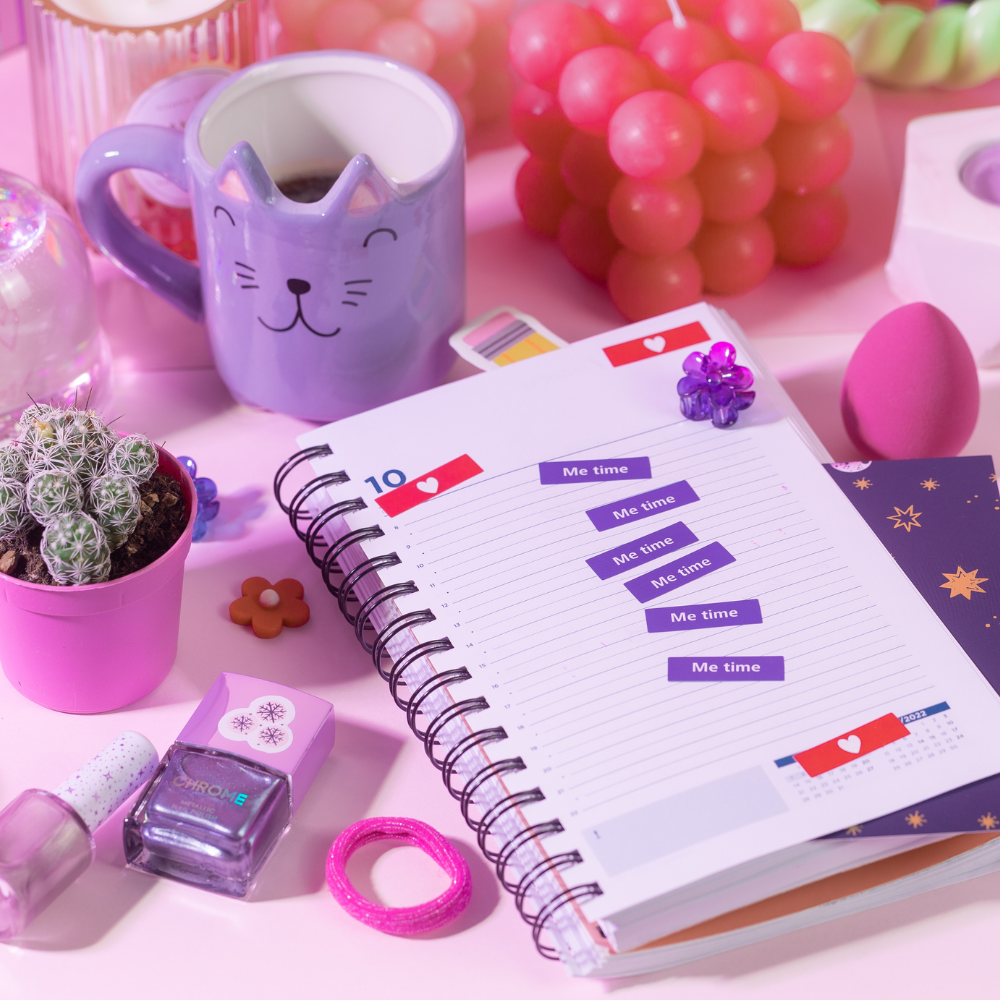
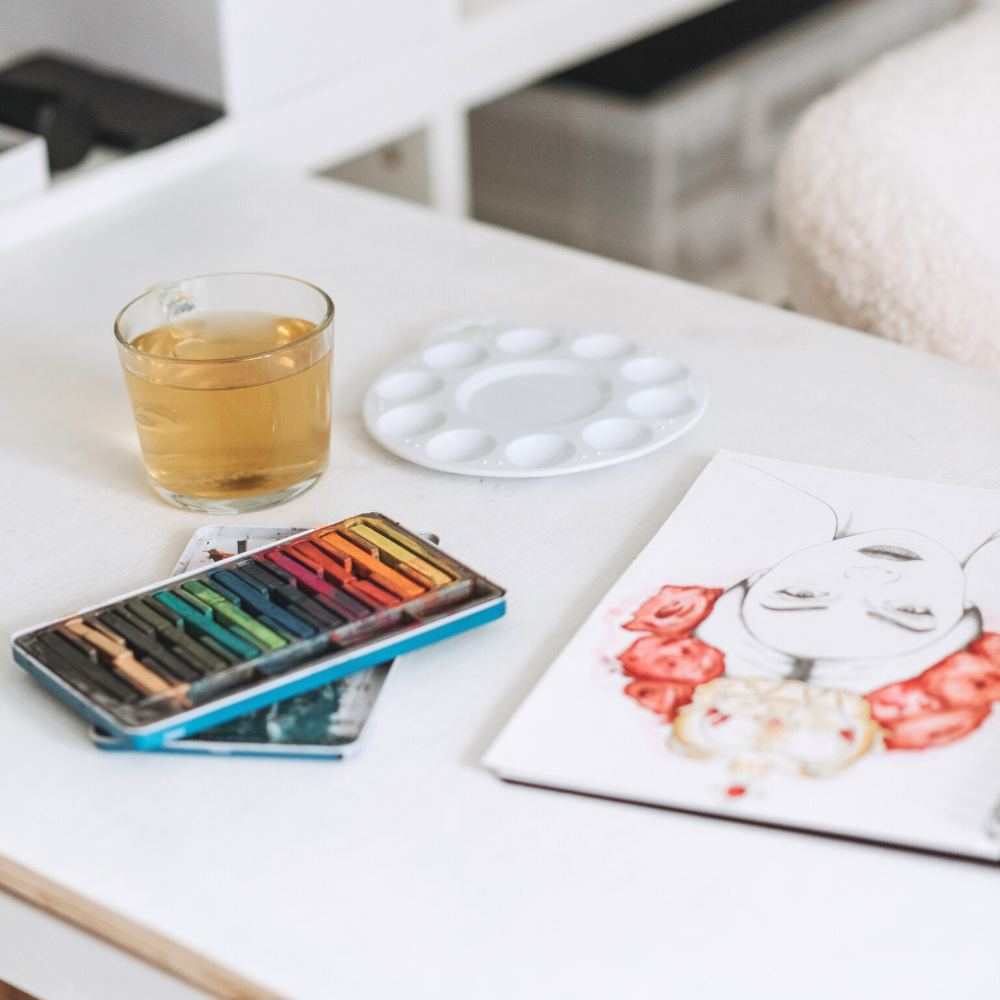
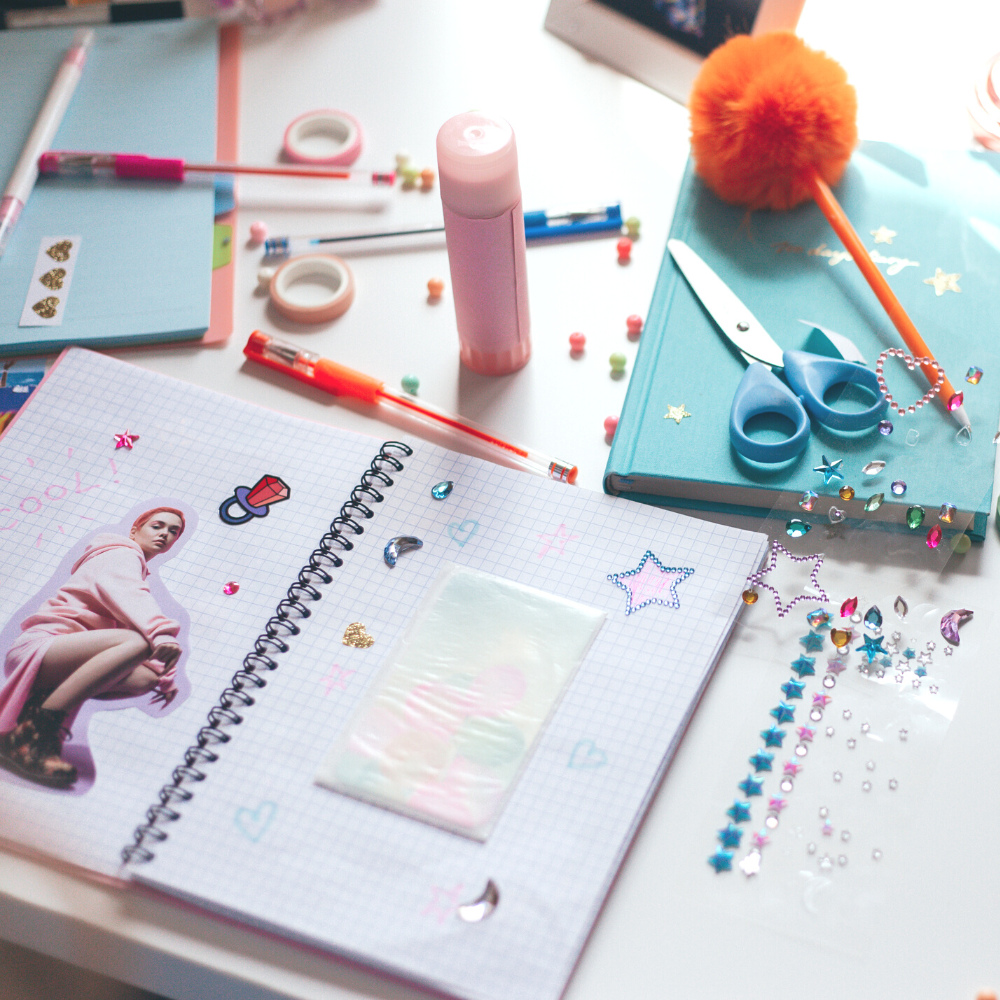
Sharing and Community in Art Journaling
While art journals are often private, sharing pages with a community of like-minded individuals can be rewarding.
It offers a chance for feedback, inspiration, and connection with others who share a passion for making art and documenting life.
Social media platforms, local art groups, and online forums are excellent places to share work and connect with fellow artists.
The act of sharing can also open up opportunities for collaboration, challenges, and themed projects that foster creativity and camaraderie.
Additionally, being part of a community provides motivation and support in an artist's journey.
Seeing the works of others can inspire new ideas and techniques, while receiving feedback can help in improving one's skills.
In conclusion, visual art journaling is a versatile and powerful tool for self-expression, personal growth, and artistic development.
Through experimentation with different mediums and styles, artists discover their unique voice and explore the endless possibilities of creating within the pages of a journal.
It serves as a sketchbook, a learning tool, and a catalyst for artistic growth, offering endless benefits for mental wellness and self-awareness.
Sharing with a community of artists further enhances the experience and fosters connections that ignite creativity and inspire new ideas.
The Future of Visual Art Journals
As the practice of art journaling continues to grow, so does its potential for innovation and evolution.
With new materials, techniques, and digital platforms emerging, the future of visual art journals is as vibrant and diverse as the artists who create them.
From virtual journals to interactive multimedia formats, the possibilities are endless.
One exciting development is the integration of technology into visual art journals.
Digital tools, such as tablets and digital pens, allow for a seamless blending of traditional and digital techniques within the pages of a journal.
This opens up new avenues for creativity and experimentation, merging the tactile experience of creating with the limitless possibilities of technology.
Additionally, the rise of online communities and social media has created a global platform for artists to share their work and collaborate with others.
This allows for an exchange of ideas and inspiration across borders, bringing together diverse perspectives and styles in one space.
As the world becomes more digital and connected, visual art journals will continue to evolve and adapt, serving as a constant source of growth and exploration for artists everywhere.
The future is full of endless possibilities, making the journey of visual art journaling an exciting one to embark on.
Tips for Starting Your Visual Art Journal
Starting a visual art journal is easy, but for some, getting started can be daunting.
Here are some tips that can help you overcome any fear or hesitation you might have before starting:
- Pick a journal that resonates with you, whether it be classic or quirky.
- Experiment with drawing materials that you are unfamiliar with so that you find a favorite.
- Allow yourself to be vulnerable and courageous with your art.
- Don’t worry about perfection. It’s okay to make mistakes and experiment with new techniques.
- Use your journal as a safe space to express yourself without judgment.
- Don’t be afraid to mix and match different media. The more you experiment, the more fun it will be!
- Let go of expectations and enjoy the process. Remember, it’s about the journey, not just the end result.
- Join a community or find an art buddy who shares your passion for art journaling.
- Take your journal with you wherever you go and document the world around you.
- Don’t be afraid to revisit old entries and see how far you have come on your artistic journey.
Remember, there is no right or wrong way to create an art journal; it’s all about self-expression and exploration!



Embrace the Journey of Visual Art Journaling
Visual art journals are a dynamic and multifaceted form of creative expression that combines the visual and the written word; they are more than just a hobby – they are an outlet for self-expression, a tool for personal growth, and a platform to refine one's creative practice.
They serve as a canvas for self-expression, a tool for artistic development, and a personal record of life's journey.
With no rules or guidelines to follow, they offer endless possibilities for experimentation, self-care, and personal growth.
From the selection of appropriate art supplies to incorporating different art styles, visual art journals provide an opportunity for artistic development and self-discovery.
By embracing art journaling, individuals can explore their creativity, document their experiences, and engage in a fulfilling practice of self-care and personal growth.
They help artists grow visually and emotionally, providing an opportunity for them to experiment without judgment.
In short, visual art journals are a safe space for artists to be their true selves.
If you’re an artist struggling with creative blocks, or you’re simply looking for a new way to express yourself, give art journaling a try because you never know what magic you might create.
Don't hesitate to pick up a journal and start your artistic journey today; with each page, you'll discover more about yourself and your creative potential!
So, what are you waiting for?
Grab some supplies and let's get started on creating your own visual art journal today!



Thinking about starting your own art journal? Check out megjournals' video!
Want even more content about creativity and art?
Be sure to check out all of our creative chronicles!
Eager to learn more about journals and sketchbooks?
Check out some of our other articles:
-What are the rules for art journals?
-What is the difference between a journal and an art journal?

